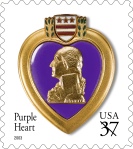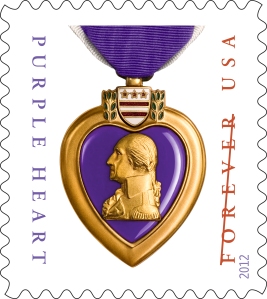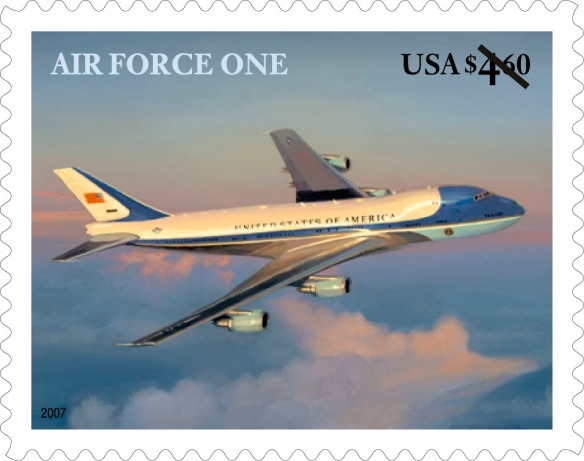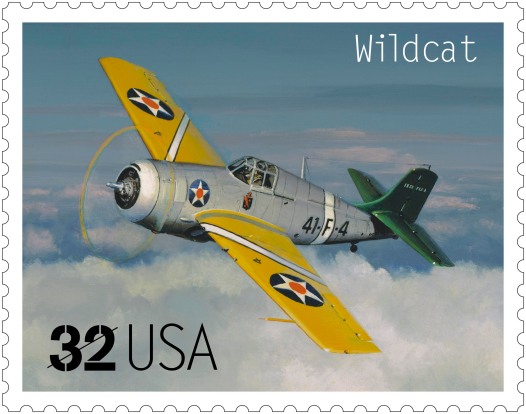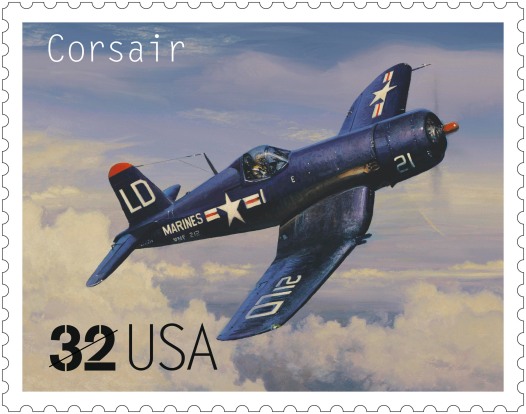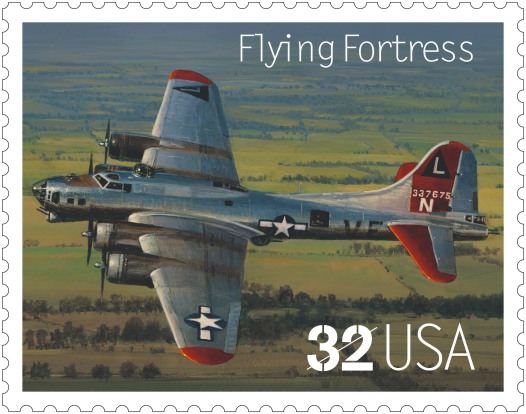In 2005, the Postal Service issued four Distinguished Marines stamps, honoring a tradition of excellence in military service that began with the establishment of the first two battalions of the Marine Corps by the Continental Congress in 1775. These four legendary Marines served with bravery and distinction during the 20th century, galvanizing their places in American history.
 Famous for his heroism during World War II, John Basilone (1916-1945) was a Congressional Medal of Honor recipient whose name and reputation are synonymous with the sacrifices and sense of duty shared by generations of enlisted Marines.
Famous for his heroism during World War II, John Basilone (1916-1945) was a Congressional Medal of Honor recipient whose name and reputation are synonymous with the sacrifices and sense of duty shared by generations of enlisted Marines.
Basilone enlisted in the Marine Corps in July 1940. In October 1942, while serving as a sergeant with the 1st Battalion, 7th Marine Regiment, 1st Marine Division at Guadalcanal in the Solomon Islands, he was in charge of two sections of heavy machine guns during a fierce assault by a Japanese regiment. With one of his gun crews out of action, he helped repel and defeat the Japanese forces. Following the grueling battle, Basilone was awarded the Congressional Medal of Honor “for extraordinary heroism and conspicuous gallantry in action against enemy forces, above and beyond the call of duty.”
As a gunnery sergeant he participated in the invasion of Iwo Jima with the 1st Battalion, 27th Marines, 5th Marine Division. After distinguishing himself by single-handedly destroying an enemy blockhouse and helping to guide a friendly tank out of a minefield, he was killed in action there on February 19, 1945, at the age of 28. For his heroism at Iwo Jima, Basilone was posthumously awarded the Navy Cross.
 A highly decorated Marine, Daniel J. Daly (1873-1937) was one of only two Marines to be awarded two Medals of Honor for separate acts of heroism.
A highly decorated Marine, Daniel J. Daly (1873-1937) was one of only two Marines to be awarded two Medals of Honor for separate acts of heroism.
In 1900, Daly was sent to China, where he earned his first Medal of Honor after defending the American legation during the Boxer Rebellion, fighting off attackers while a barricade was repaired. In 1915 he was sent to Haiti, where he earned his second Medal of Honor for helping to defend 38 Marines against approximately 400 bandits.
Daly is best remembered for rallying his men at Belleau Wood in June 1918 during a bleak moment when they were facing heavy German machine-gun fire. For his bravery in 1918, he was awarded the Distinguished Service Cross, and he received prominent decorations from the French government as well, including the Croix de Guerre with Palm.
 John A. Lejeune (1867-1942) is remembered for his professionalism and dedication. Lejeune is often referred to as “the greatest of all leathernecks,” and his leadership and foresight helped prepare the Marine Corps for the amphibious assaults of World War II.
John A. Lejeune (1867-1942) is remembered for his professionalism and dedication. Lejeune is often referred to as “the greatest of all leathernecks,” and his leadership and foresight helped prepare the Marine Corps for the amphibious assaults of World War II.
During World War I, Lejeune led the 64th Army Brigade and the 4th Marine Brigade. Beginning in July 1918, he was promoted to major general and became the first Marine to command an Army division. For his service, Lejeune was awarded the Distinguished Service Medal from both the Army and the Navy; the French Legion of Honor; and the Croix de Guerre with Palm.
From 1920 until 1929, while serving as Commandant, Lejeune was determined to keep the Marine Corps from becoming antiquated. He foresaw the need for specialized amphibious assault capabilities, and his efforts prepared the Marine Corps for island invasions in the Pacific during World War II. Today, in keeping with an order issued by Lejeune in 1921, an annual message that summarizes the history, mission, and traditions of the Marine Corps is published each November during the Marine Corps birthday celebration.
 Nicknamed “Chesty” for his physique as well as for his aggressive bearing, Lewis B. Puller (1898-1971) had a reputation for incredible toughness. Renowned for his leadership during crucial battles in World War II and the Korean War, Puller became one of the most highly decorated Marines, rising through the ranks from private to general and receiving the Navy Cross five times.
Nicknamed “Chesty” for his physique as well as for his aggressive bearing, Lewis B. Puller (1898-1971) had a reputation for incredible toughness. Renowned for his leadership during crucial battles in World War II and the Korean War, Puller became one of the most highly decorated Marines, rising through the ranks from private to general and receiving the Navy Cross five times.
Between 1928 and 1933 Puller fought in Nicaragua, where he earned his first two Navy Crosses. He then served for nearly two years at the American legation in China, where his duties included command of the famous Horse Marines. In 1942, after training the 1st Marine Battalion, 7th Marine Regiment, 1st Marine Division, he led them through fierce combat against the Japanese at Guadalcanal, where the Marines’ defense of the airstrip at Henderson Field earned Puller his third Navy Cross. In late 1943 and early 1944, the 7th Marines also took part in the invasion of the island of New Britain, where Puller received his fourth Navy Cross following combat at Cape Gloucester.
During the Korean War, Puller again commanded the 1st Marines during the risky U.S. landing at Inchon in 1950. For his service in Korea, Puller earned his fifth Navy Cross and a promotion to brigadier general. Puller retired as a lieutenant general in 1955 and died in 1971.
Behind these highly distinguished men stand millions of other servicemen and servicewomen who have dedicated their lives to protecting our country. We thank them all for their sacrifices.
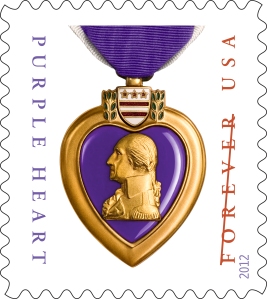 Rubin, a native of the Bronx, New York, began his military service with the U.S. Army in May 1943. Injured twice in July 1944 during military operations in the Normandy region of France, Rubin was awarded a Purple Heart and an Oak Leaf Cluster to the Purple Heart. On July 8, 1944, for gallantry in action during a fierce German counter-attack, he received a Silver Star. In February 1946, Rubin returned to civilian life. Upon his death in December 1978, Rubin was buried at Arlington National Cemetery with full military honors.
Rubin, a native of the Bronx, New York, began his military service with the U.S. Army in May 1943. Injured twice in July 1944 during military operations in the Normandy region of France, Rubin was awarded a Purple Heart and an Oak Leaf Cluster to the Purple Heart. On July 8, 1944, for gallantry in action during a fierce German counter-attack, he received a Silver Star. In February 1946, Rubin returned to civilian life. Upon his death in December 1978, Rubin was buried at Arlington National Cemetery with full military honors.
